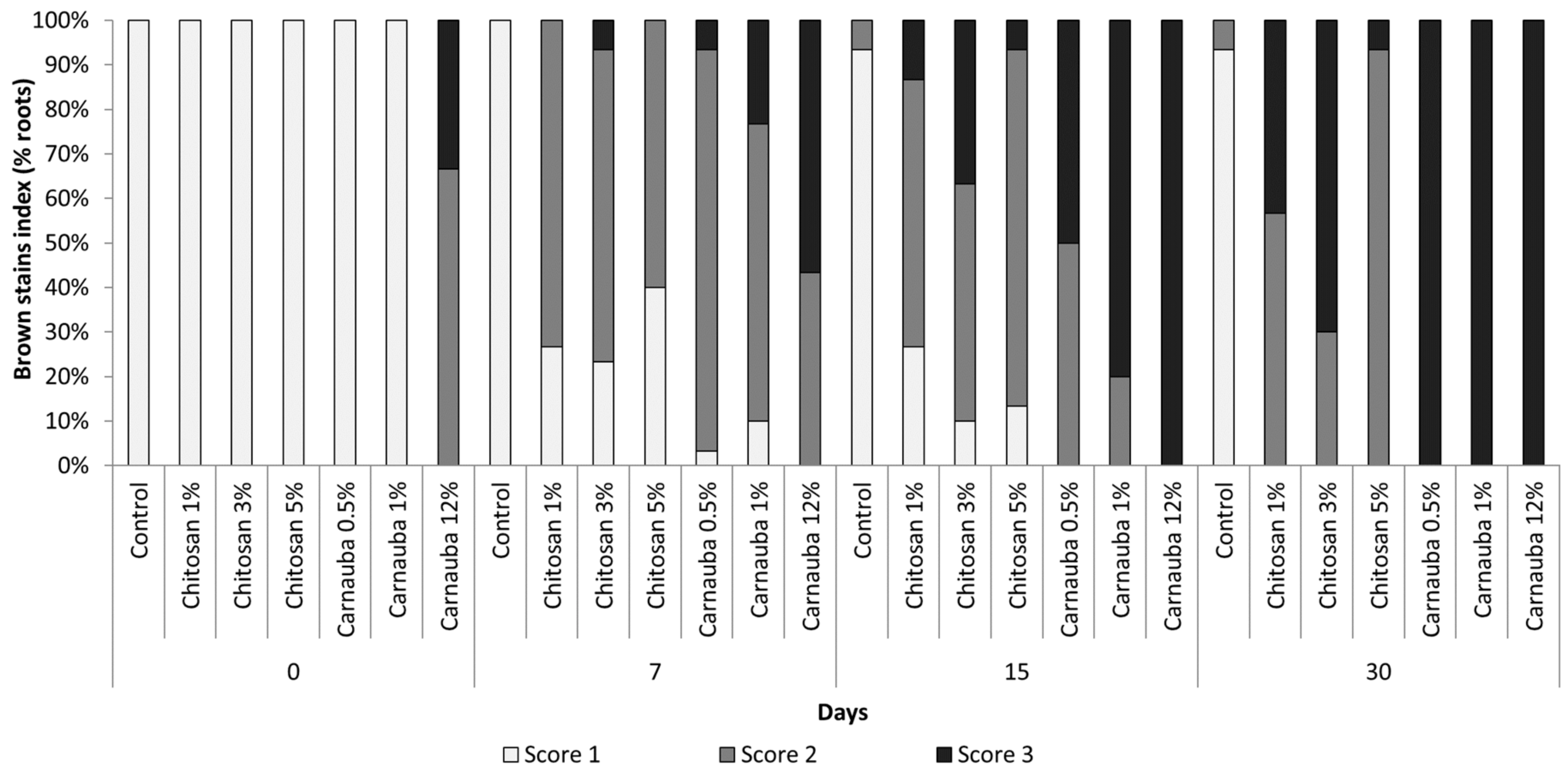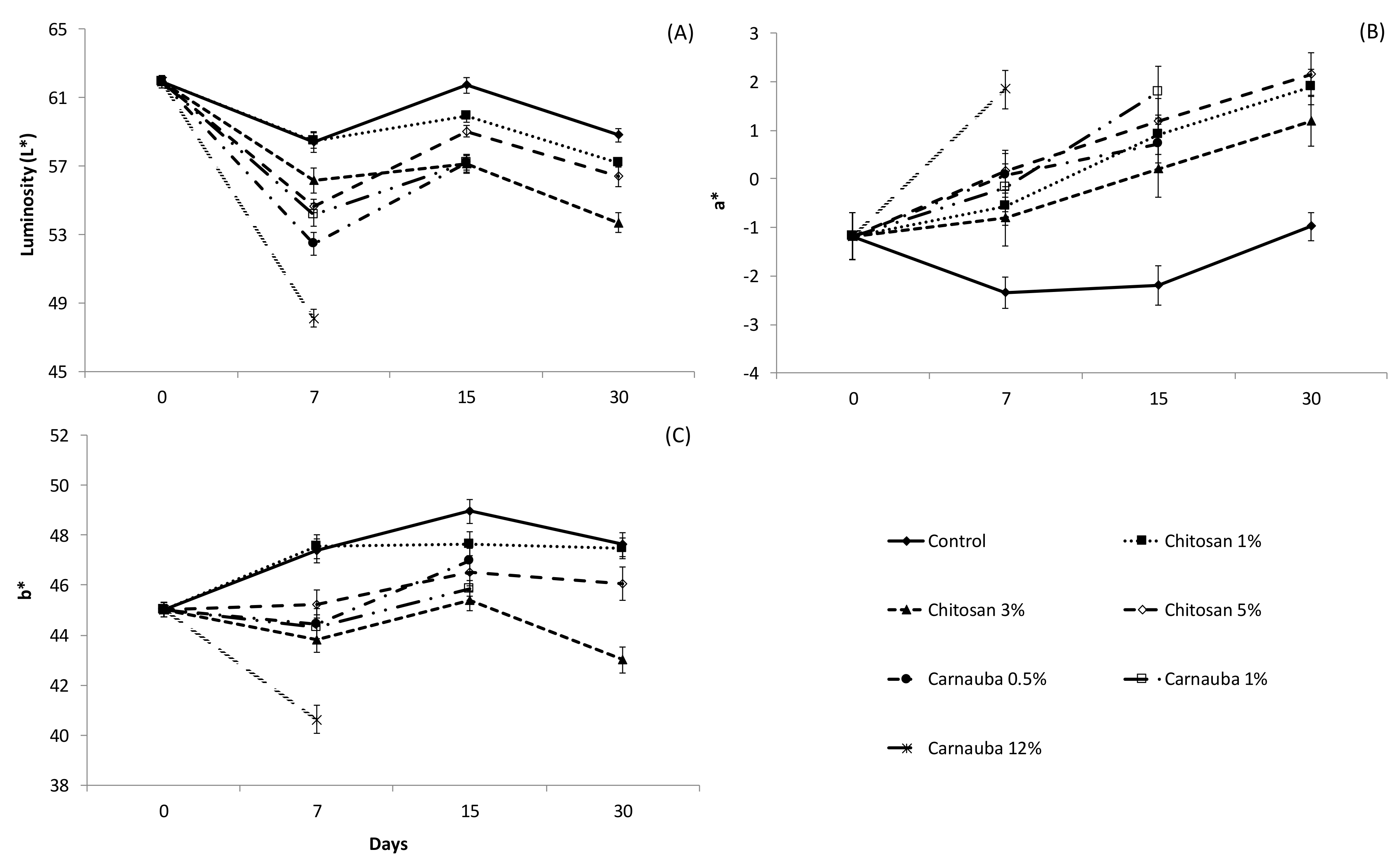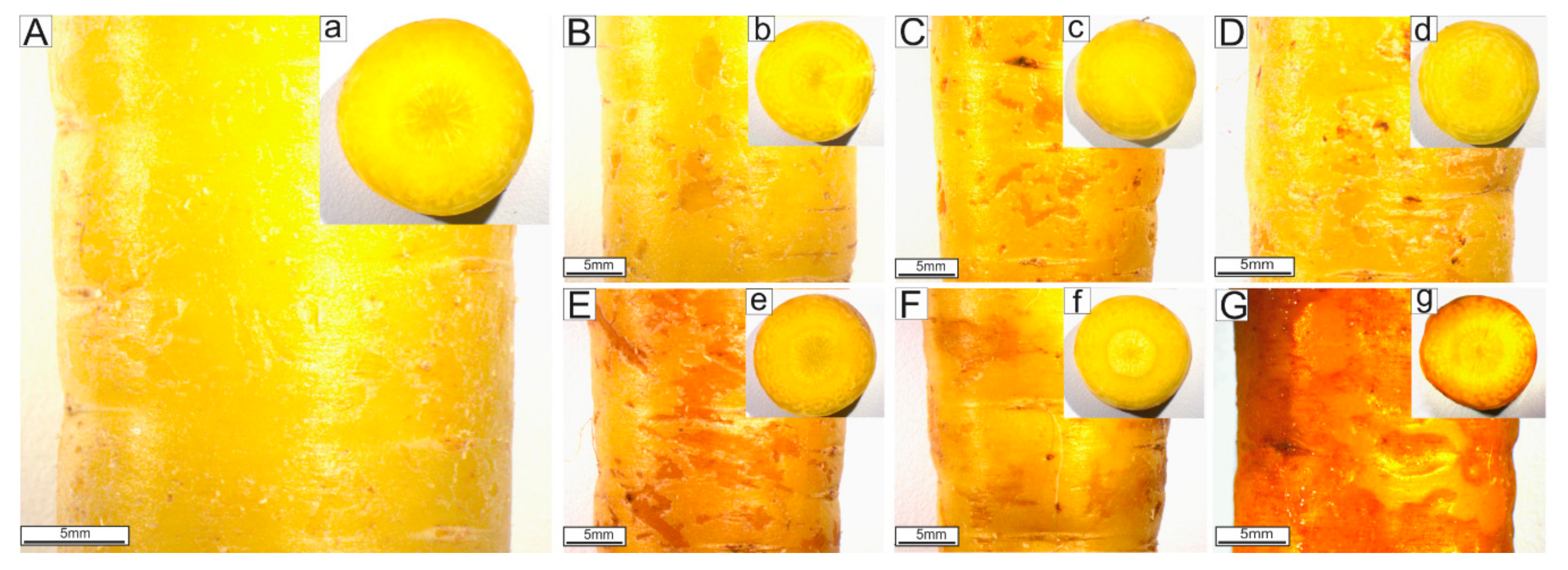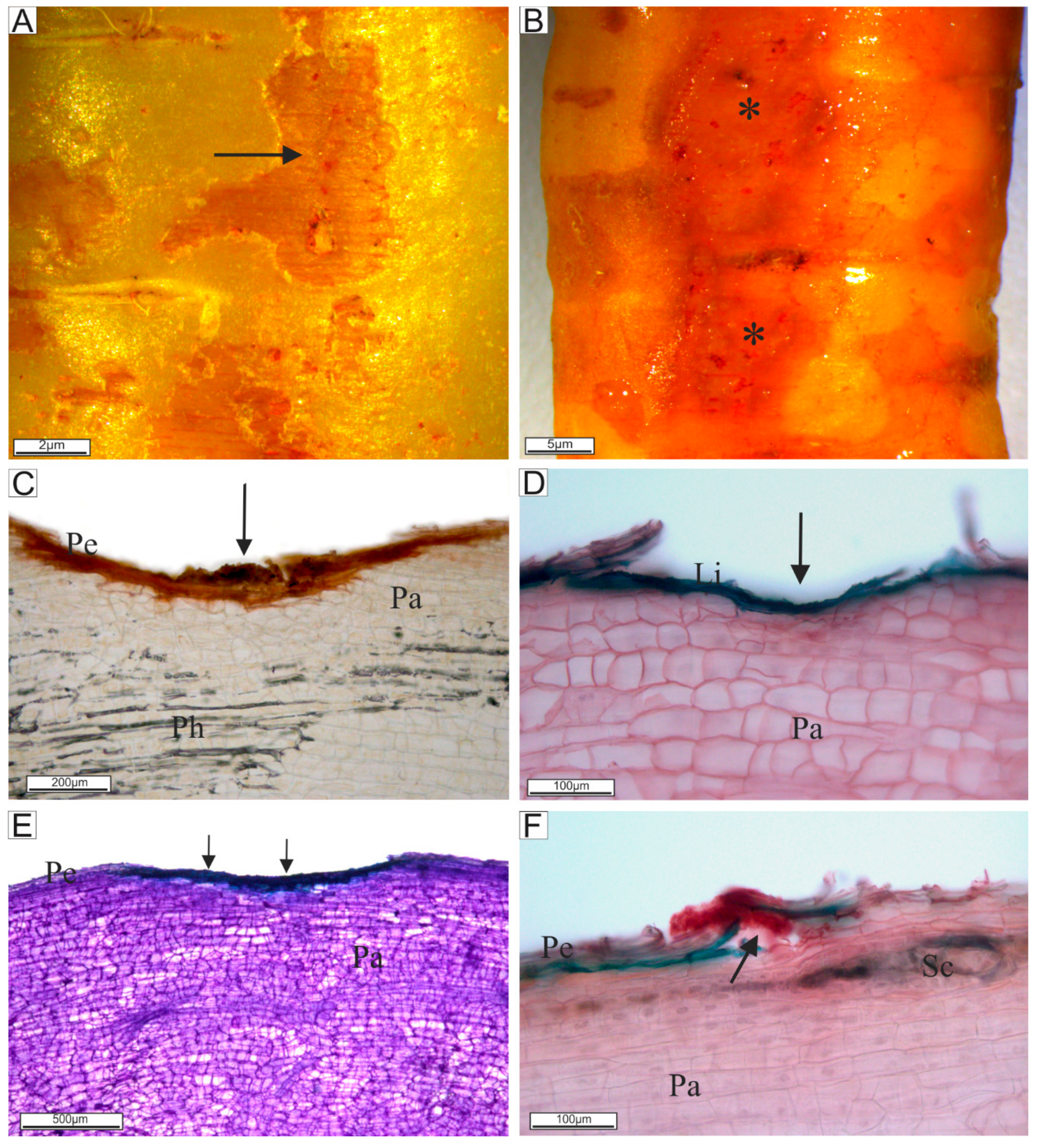Chitosan and Carnauba Wax Coatings Are Not Recommended for Yellow Carrots
Abstract
:1. Introduction
2. Materials and Methods
2.1. Raw Material and Treatments
2.2. Analisys
3. Results and Discussion
3.1. Visual Quality
3.2. Damage Evaluation with Microscope and Magnifier
Supplementary Materials
Author Contributions
Funding
Acknowledgments
Conflicts of Interest
References
- Almeida, E.I.B.; Ribeiro, W.S.; da Costa, L.C.; Horácio, H.; de Lucena, J.A.B. Levantamento de perdas em hortaliças frescas na rede varejista de Areia (PB). Revista Brasileira de Agropecuária Sustentável (RBAS) 2012, 2, 52. [Google Scholar] [CrossRef]
- Lana, M.M.; Moita, A.W.; Nascimento, E.F.d.; Souza, G.d.S.e.; Melo, M.F.d. Identificação das causas de perdas pós-colheita de cenoura no varejo, Brasília-DF. Hortic. Bras. 2002, 20, 241–245. [Google Scholar] [CrossRef] [Green Version]
- Lacroix, M.; Le Tien, C. Edible films and coatings from nonstarch polysaccharides. In Innovations in Food Packaging; Han, J.H., Ed.; Academic Press: London, UK, 2005; pp. 338–361. [Google Scholar] [CrossRef]
- Debeaufort, F.; Quezada-Gallo, J.-A.; Voilley, A. Edible Films and Coatings: Tomorrow’s Packagings: A Review. Crit. Rev. Food Sci. Nutr. 1998, 38, 299–313. [Google Scholar] [CrossRef] [PubMed]
- Nieto, M.B. Structure ad function os polyssacharide gum-based edible films and coatings. In Edible Films and Coatings for Food Applications; Embuscado, M.E., Huber, K.C., Eds.; Springer: New York, NY, USA, 2009; pp. 57–112. [Google Scholar] [CrossRef]
- Dhall, R.K. Advances in Edible Coatings for Fresh Fruits and Vegetables: A Review. Crit. Rev. Food Sci. Nutr. 2013, 53, 435–450. [Google Scholar] [CrossRef] [PubMed]
- Rhim, J.W.; Shellhammer, T.H. Lipid-based edible films and coatings. In Innovations in Food Packaging; Han, J.H., Ed.; Academic Press: London, UK, 2005; pp. 362–383. [Google Scholar] [CrossRef]
- Minolta, C. Precise Color Communication: Color Control from Feeling to Instrumentation; Minolta Corporation Instrument Systems Division: Osaka, Japan, 1994; p. 49. [Google Scholar]
- Jensen, W.A. Botanical Histochemistry: Principles and Practice; W.H. Freeman and Company: San Francisco, CA, USA, 1962; p. 408. [Google Scholar]
- Dop, P.; Gautié, A. Manuel de Technique Botanique; Lamarre: Paris, France, 1928; p. 594. [Google Scholar]
- Ferreira, D.F. Sisvar: A Guide for its Bootstrap procedures in multiple comparisons. Ciência e Agrotecnologia 2014, 38, 109–112. [Google Scholar] [CrossRef]
- Caron, V.C.; Jacomino, A.P.; Kluge, R.A. Conservação de cenouras ‘Brasília’ tratadas com cera. Hortic. Bras. 2003, 21, 597–600. [Google Scholar] [CrossRef]




© 2018 by the authors. Licensee MDPI, Basel, Switzerland. This article is an open access article distributed under the terms and conditions of the Creative Commons Attribution (CC BY) license (http://creativecommons.org/licenses/by/4.0/).
Share and Cite
Berno, N.D.; Tessmer, M.A.; Preczenhak, A.P.; Nastaro, B.T.; Spoto, M.H.F.; Kluge, R.A. Chitosan and Carnauba Wax Coatings Are Not Recommended for Yellow Carrots. Horticulturae 2018, 4, 31. https://doi.org/10.3390/horticulturae4040031
Berno ND, Tessmer MA, Preczenhak AP, Nastaro BT, Spoto MHF, Kluge RA. Chitosan and Carnauba Wax Coatings Are Not Recommended for Yellow Carrots. Horticulturae. 2018; 4(4):31. https://doi.org/10.3390/horticulturae4040031
Chicago/Turabian StyleBerno, Natalia Dallocca, Magda Andréia Tessmer, Ana Paula Preczenhak, Bruna Thomé Nastaro, Marta Helena Fillet Spoto, and Ricardo Alfredo Kluge. 2018. "Chitosan and Carnauba Wax Coatings Are Not Recommended for Yellow Carrots" Horticulturae 4, no. 4: 31. https://doi.org/10.3390/horticulturae4040031




